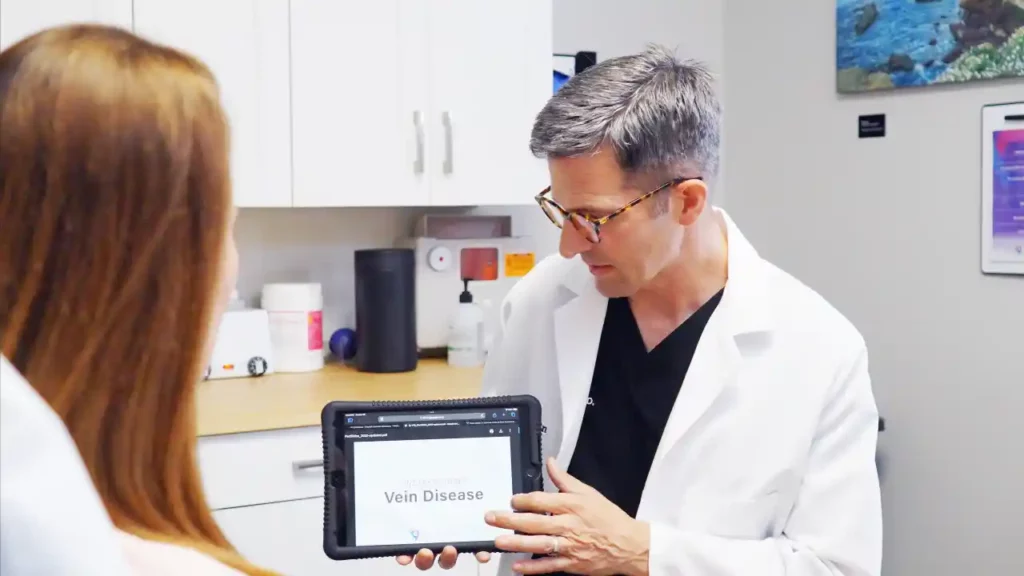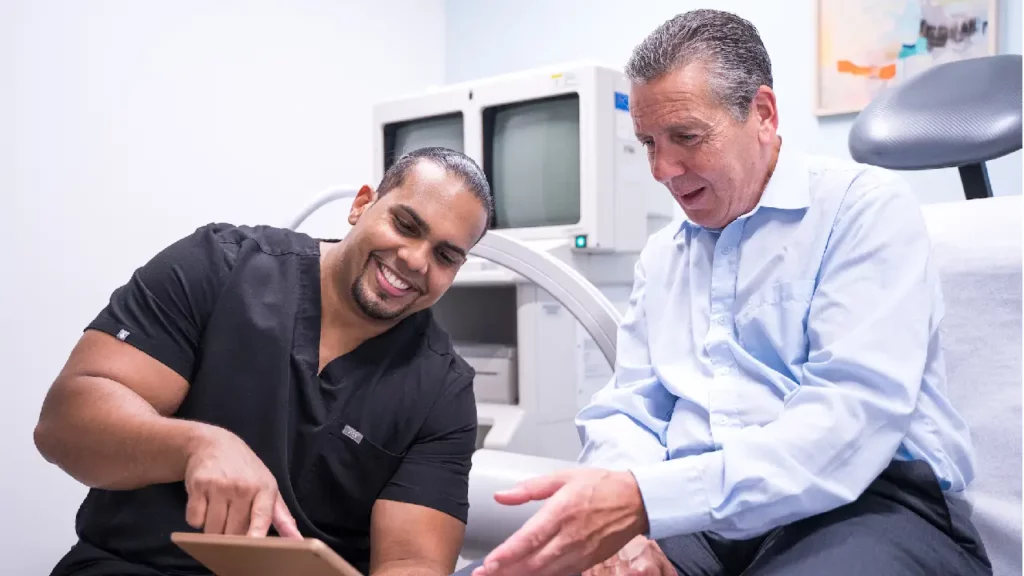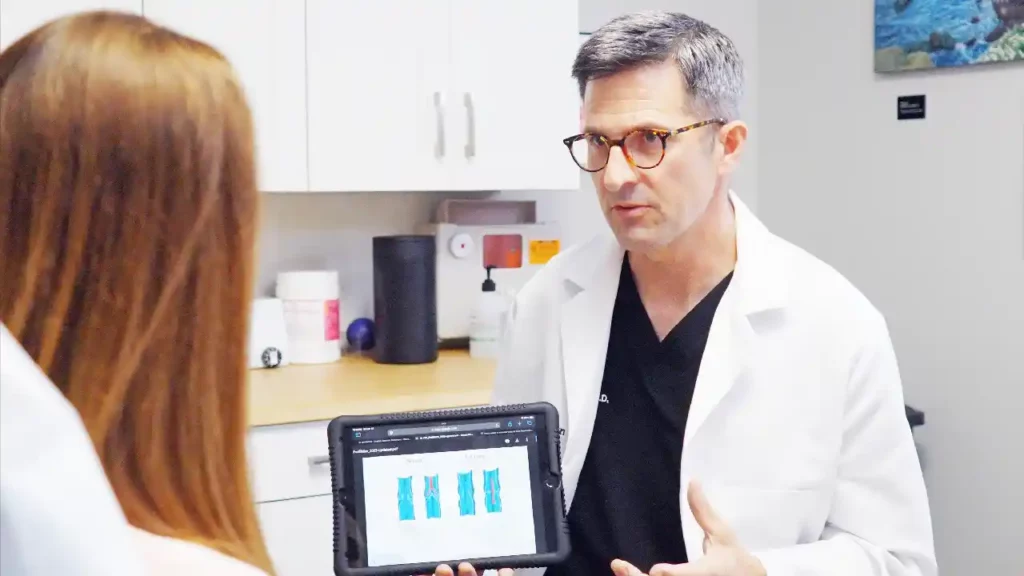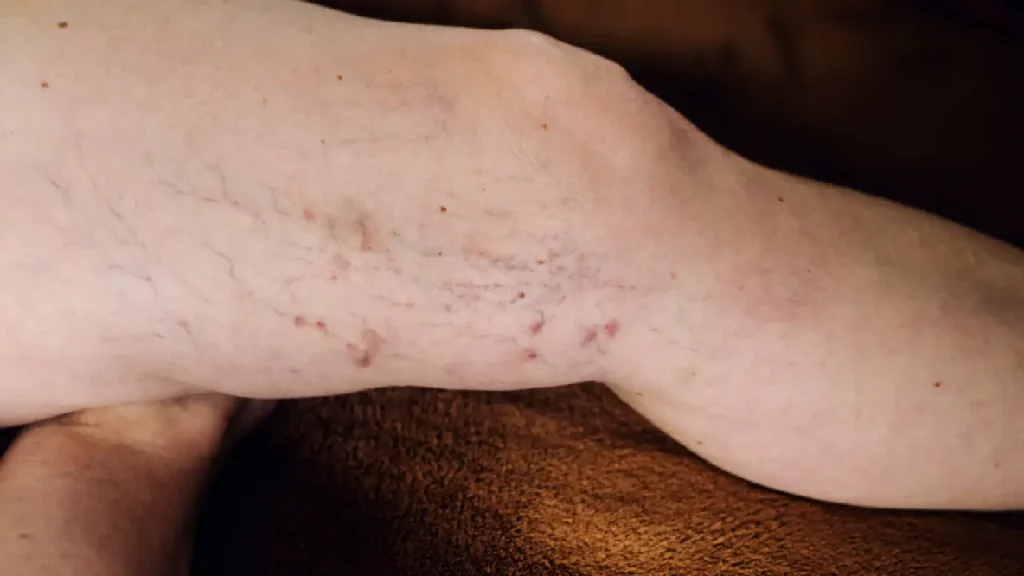Varicose veins are a common condition that affects millions of people worldwide, and while many assume that weight is the primary cause, there are numerous other factors at play. At Vein Doctor for Women, we understand that varicose veins can be a source of discomfort and self-consciousness, and we are here to help you determine your risk factors. In this article, we explore the various underlying causes of varicose veins.
Chronic Venous Insufficiency
The root cause of varicose veins is often chronic venous insufficiency (CVI), a condition in which the veins are unable to efficiently return blood from the legs to the heart. In healthy veins, one-way valves prevent blood from flowing backward. However, when these valves fail or become weak, blood can pool in the veins, causing them to enlarge and become varicose. CVI can be influenced by various factors, and understanding these can help in managing varicose veins.
Heredity
One of the most significant factors contributing to varicose veins is heredity. If your parents or grandparents had varicose veins, you are more likely to develop them as well. Genetic predisposition can affect the structure and strength of your vein walls and valves, making them more susceptible to malfunction. While you cannot change your genetic makeup, being aware of this risk can help you take proactive steps in monitoring and managing your vein health.
Hormonal Changes
Hormonal changes, particularly in women, can affect vein health. Pregnancy, menopause, and hormonal treatments like birth control pills can contribute to the development of varicose veins. During pregnancy, the increased volume of blood and pressure on the veins, combined with hormonal changes that relax vein walls, can lead to varicose veins. Hormonal fluctuations during menopause can also weaken vein walls and valves, increasing the risk of varicose veins.

Prolonged Standing or Sitting
Your lifestyle and occupation can also significantly influence the development of varicose veins. Jobs that require prolonged standing or sitting, such as driving, nursing, or desk jobs, can put extra pressure on your leg veins. When you stand or sit for long periods, blood flow in the legs slows down, increasing the risk of blood pooling and vein damage. It’s essential to take breaks, move around, and elevate your legs periodically to promote better blood circulation.
Age
As we age, the wear and tear on our veins and valves can lead to varicose veins. The natural aging process causes veins to lose elasticity, and valves may weaken, making it harder for them to function correctly. This is why varicose veins are more common in older adults. While aging is inevitable, maintaining a healthy lifestyle and regular check-ups can help manage the risk.
Obesity
While weight is not the sole cause of varicose veins, it is a contributing factor. Excess body weight puts additional pressure on your veins, particularly in the legs, which can exacerbate the development of varicose veins. Maintaining a healthy weight through a balanced diet and regular exercise can help reduce this risk.
Injury or Trauma
Injuries or trauma to the legs can damage the veins and lead to varicose veins. Whether from a sports injury, accident, or surgery, any trauma that affects the veins can compromise their function and lead to varicose veins. If you have experienced leg trauma, it is crucial to monitor your vein health and seek medical advice if you notice any changes.
Pregnancy
Pregnancy is a well-known risk factor for varicose veins. The increased blood volume to support the growing fetus puts additional pressure on the veins. Moreover, the expanding uterus exerts pressure on the pelvic veins, which can affect blood flow in the legs. Hormonal changes during pregnancy also relax the vein walls. While varicose veins caused by pregnancy often improve after childbirth, they can still be a source of discomfort during pregnancy.
Lack of Exercise
A sedentary lifestyle can contribute to the development of varicose veins. Regular physical activity helps improve blood circulation and strengthens the muscles that support your veins. Without adequate exercise, blood flow can become sluggish, increasing the risk of varicose veins. Incorporating activities like walking, swimming, and cycling into your routine can help maintain healthy blood flow and reduce the risk of vein problems.
Diet
Your diet can also impact your vein health. A diet high in salt can lead to water retention, increasing the pressure on your veins. Conversely, a diet rich in fiber can prevent constipation, which can contribute to varicose veins by increasing abdominal pressure. Ensuring you have a balanced diet with plenty of fruits, vegetables, and whole grains can support your vein health.
Gender
Women are more likely to develop varicose veins than men, largely due to hormonal factors. Estrogen, the female hormone, can weaken vein walls, making women more susceptible to varicose veins. Hormonal changes during menstruation, pregnancy, and menopause further increase the risk. Being aware of this gender-specific risk can help women take preventive measures and seek early treatment if needed.
Tips to Manage the Risk of Varicose Veins
Managing the risk of varicose veins involves adopting healthy lifestyle habits and being mindful of factors that can contribute to vein health. Here are some practical tips to help you reduce the risk of developing varicose veins:
- Stay Active: Regular physical activity promotes healthy blood circulation and strengthens the muscles that support your veins. Aim for at least 30 minutes of moderate exercise, such as walking, swimming, or cycling, most days of the week. If your job requires prolonged sitting or standing, take regular breaks to move around and stretch your legs.
- Maintain a Healthy Weight: Excess weight can put additional pressure on your veins, increasing the risk of varicose veins. Maintaining a healthy weight through a balanced diet and regular exercise can help alleviate this pressure. Focus on a diet rich in fruits, vegetables, whole grains, and lean proteins to support overall health.
- Elevate Your Legs: When you rest, elevate your legs to help reduce pressure on your veins and improve blood flow. Elevating your legs above the level of your heart for 15-20 minutes several times a day can be beneficial, especially if you spend a lot of time sitting or standing.
- Wear Compression Stockings: Compression stockings apply gentle pressure to your legs, helping to improve blood flow and reduce the risk of blood pooling in the veins. They are particularly helpful if you have a job that involves long periods of standing or sitting or if you have a family history of varicose veins.
- Avoid Tight Clothing: Tight clothing can restrict blood flow and contribute to the development of varicose veins. Opt for loose-fitting, comfortable clothing that does not constrict your waist, groin, or legs, thus supporting optimal blood flow to the heart.
- Stay Hydrated and Eat a Fiber-Rich Diet: Staying hydrated and eating a diet high in fiber can help prevent constipation, which can increase pressure on your veins. Drink plenty of water and include fiber-rich foods such as fruits, vegetables, and whole grains in your diet.
The Importance of Consulting a Vein Doctor
While weight is a notable risk factor for varicose veins, it is far from the only one. Chronic venous insufficiency, heredity, hormonal changes, prolonged standing or sitting, age, obesity, injury or trauma, pregnancy, lack of exercise, diet, and gender all contribute to varicose veins. Understanding these risks can help you take steps to manage and prevent varicose veins.
At Vein Doctor for Women, we believe in a comprehensive approach to vein health. Consulting with a vein specialist is crucial to accurately diagnose the underlying causes of your varicose veins and develop a personalized treatment plan. If you have concerns about varicose veins, don’t hesitate to schedule a consultation today. Together, we can address the root cause of your vein problems and achieve healthier legs.
